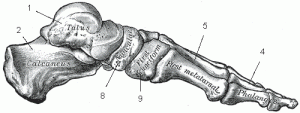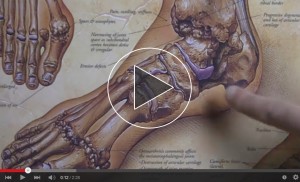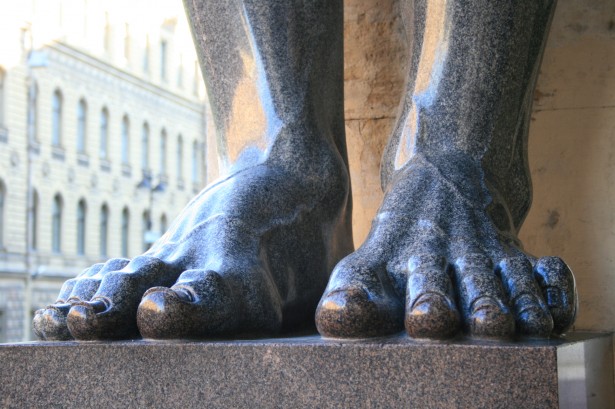
Image by Lynn Greyling – click photo for more
Human feet are a marvel of engineering. The amount of stress that goes through the average person’s foot in a lifetime would break stainless steel mechanical feet a dozen times over. Yet the flesh and bone miracle dangling at the end of our legs is capable of handling the load.
Now, if you run as part of your fitness lifestyle, you are putting your feet through 2 to 3 times more force than a non-runner. So you’ll most likely end up with some form of foot injury at one point or another. Runners should be able to tell the difference between soft tissue pain and a stress fracture that is affecting the bones.
This article focuses on injuries caused by over-use, not due to a fall or other trauma. Runners are notorious for training too often or too long and consequently suffering some form of over training tissue damage. If you hurt yourself suddenly by rolling the ankle, twisting the foot in a painful way or falling, you will need to be assessed by the emergency room to rule out a traumatic fracture.
So How Do I Know If I Have a Soft Tissue Injury?
Again, this is only for those of you who haven’t had any trauma but do have pain. Some of the more common areas of soft tissue pain in the foot and ankle complex are:
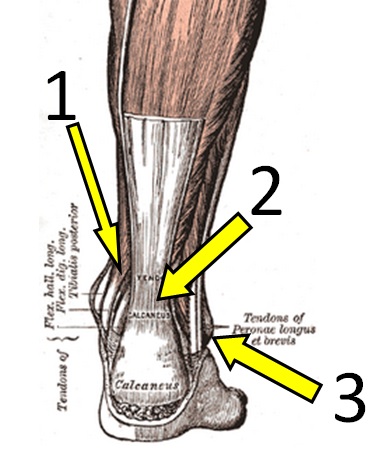 1. Behind the inside bone of the ankle: this is where 3 major tendons (the posterior tibialis, flexor digitorum longus and the flexor hallucis longus) pass and connect to various bones of the foot. Overuse of these, especially in runners will manifest as pain, especially the morning after a run when you first get out of bed to start your day.
1. Behind the inside bone of the ankle: this is where 3 major tendons (the posterior tibialis, flexor digitorum longus and the flexor hallucis longus) pass and connect to various bones of the foot. Overuse of these, especially in runners will manifest as pain, especially the morning after a run when you first get out of bed to start your day.
2. The achilles tendon: this is a very common problem for runners, especially way down on the heel bone itself. Although pain can occur higher up as well.
3. Behind the outside bone of the ankle: the peroneus brevis and longus come through this area and when inflammed by overuse, will cause pain once you’ve cooled down from a work (or sometimes during a workout).
The top of the foot has a complex network of tendons, ligaments and muscles that are susceptible to repetitive strain such as running. This area can be painful but is most likely a soft tissue problem.
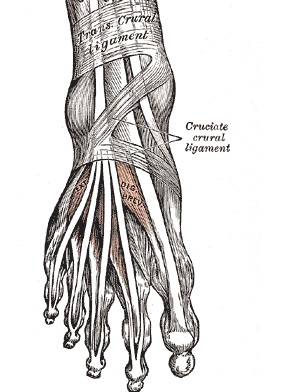
What About Stress Fractures?
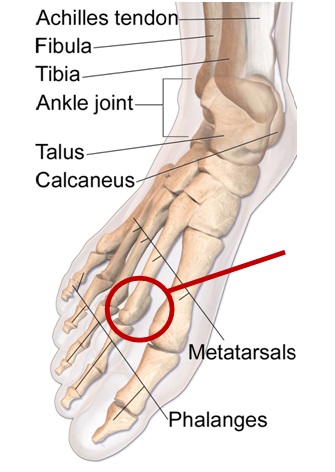 The most typical site of pain for stress fractures is the bottom of the 2nd metatarsal head. If you look down at your second toe (the one next to your big toe) and put your finger underneath it, then travel down until you are just passed the ball of the foot, this is the hot spot for stress fracture pain in the feet. A stress fracture occurs when too much physical stress is placed on the foot over an extended period of time. When we work out and put strain on our skeleton, the bones break down. With adequate rest the bones build back up. If you train too much however, you cannot keep up with the breaking down of your bones and you slowly develop a fracture.
The most typical site of pain for stress fractures is the bottom of the 2nd metatarsal head. If you look down at your second toe (the one next to your big toe) and put your finger underneath it, then travel down until you are just passed the ball of the foot, this is the hot spot for stress fracture pain in the feet. A stress fracture occurs when too much physical stress is placed on the foot over an extended period of time. When we work out and put strain on our skeleton, the bones break down. With adequate rest the bones build back up. If you train too much however, you cannot keep up with the breaking down of your bones and you slowly develop a fracture.
The classic symptoms of a stress fracture is constant pain, even when laying down. However, the pain goes up considerably when you stand up and becomes intolerable when you try and walk or run. If you have this type of pain, especially if it is under the head of the 2nd metatarsal, you will need an x-ray to determine the condition of your bones.
If you are diagnosed with a stress fracture, this is a sign that you must change one or more of the following:
1. the surfaces on which you run (chip trails, grass, beaches are better than asphalt)
2. your foot wear (the more padding the better)
3. the amount of running you do.
I suggest dealing with all three for the best results. Don’t be a hero. If you have suffered a stress fracture on the feet, you will need at least 5 weeks to recuperate. Make sure your diet is conducive to bone healing**:
Foods high in Vitamin D
Mushrooms, Fish, Cod Liver Oil, Oysters, Sardines, Eggs
Foods high in Magnesium
Broccoli, Nuts, Seeds: (i.e.: flax and sesame), Dark Chocolate
Foods high in Potassium
Fish, Broccoli, Avocados, Bananas, Sweet Potatoes, Dried Apricots, Pistachios
Foods high in Vitamin K
Prunes, Dark Leafy Greens (e.g.: Spinach, Kale, Chard, Scallions, Brussels Sprouts, Broccoli, Asparagus, Cabbage)
**please see this site for more details of the nutritional elements that assist recovery from stress fractures.












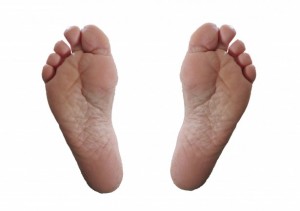
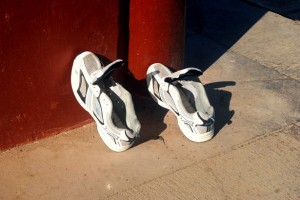
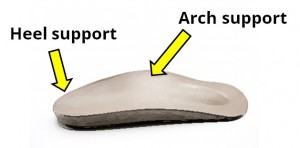 My main problem with orthotics is the price-per-pain-relief ratio. Your corner pharmacy will carry generic insoles for about $20.00. In my experience, if a patient will benefit from orthotics, they will get about 60% of the same effect from the cheap, generic insoles.
My main problem with orthotics is the price-per-pain-relief ratio. Your corner pharmacy will carry generic insoles for about $20.00. In my experience, if a patient will benefit from orthotics, they will get about 60% of the same effect from the cheap, generic insoles. 